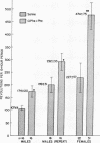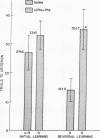Abstract
The biochemical features of phenylketonuria have been reproduced in developing rat pups by administering to them a combination of p-chloro-DL-phenylalanine plus L-phenylalanine for the first 21 days after birth. During the treatment period, the experimental animals show delayed eye opening and decreased brain weight compared with controls given saline. Neuropathological examination of developing animals reveals deficient myelination and some inhibition of cerebellar maturation. When tested as adults, after a long recovery period, animals with phenylketonuria are hyperactive in activity wheels. Adult rats are deficient in reversing a position choice and demonstrate impaired performance in a Y-maze. Rats treated with p-chloro-DL-phenylalanine plus L-phenylalanine during the vulnerable period of rapid brain development thus have enduring behavioral changes that persist throughout life.
Keywords: L-phenylalanine, p-chloro-DL-phenylalanine
Full text
PDF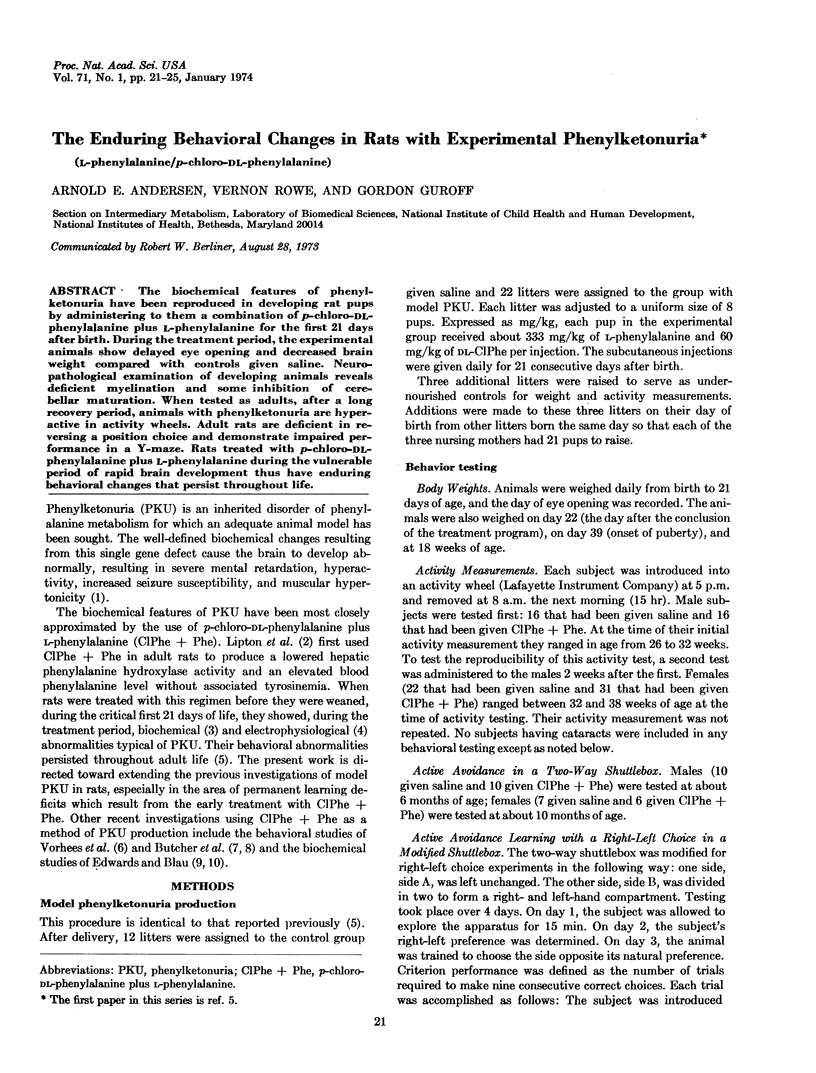
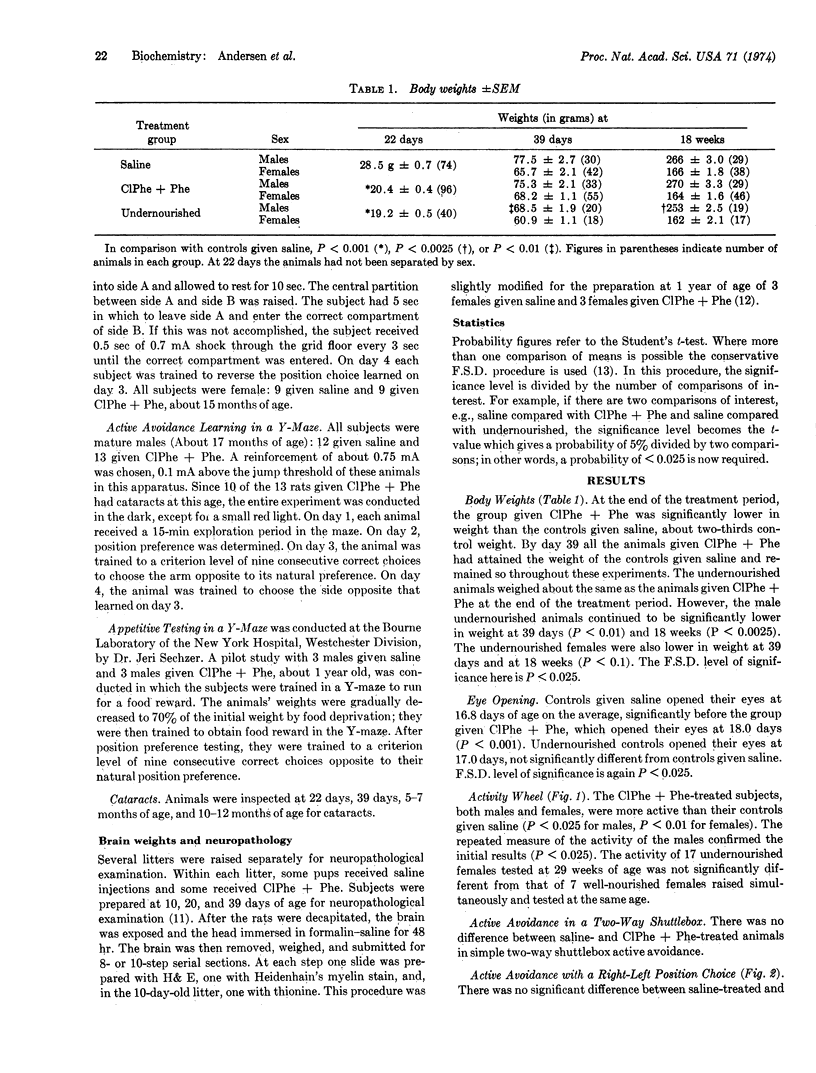
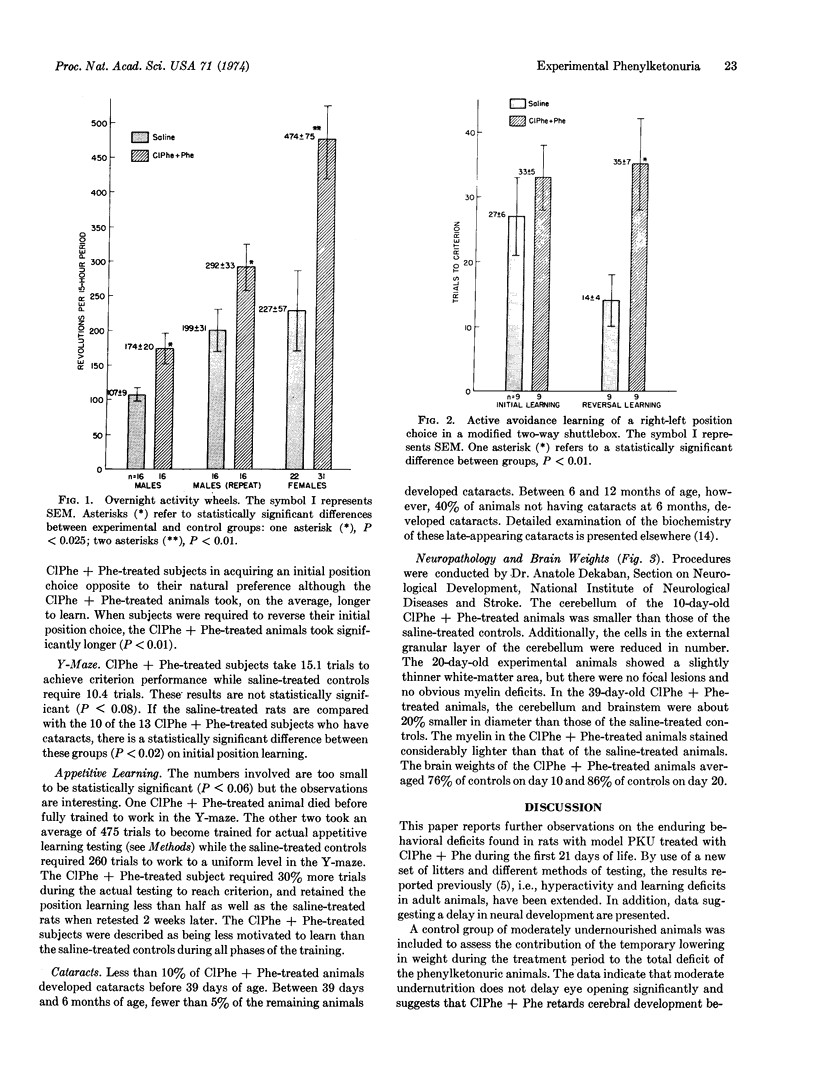
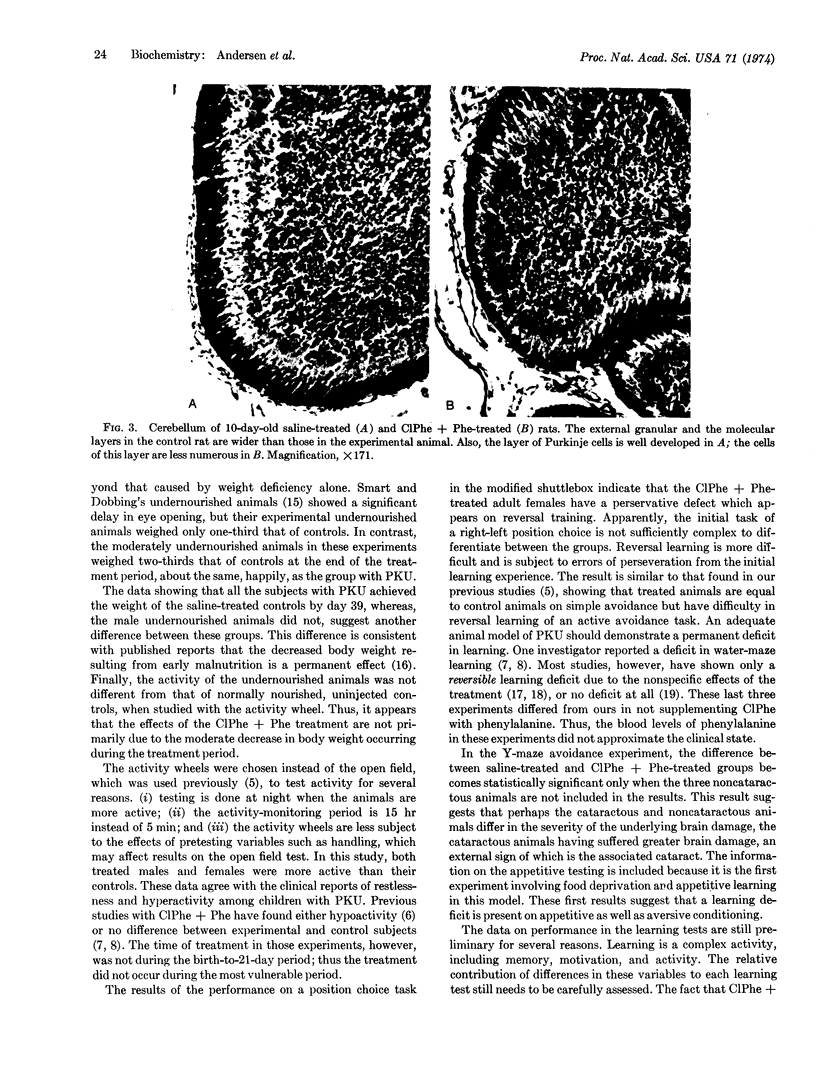
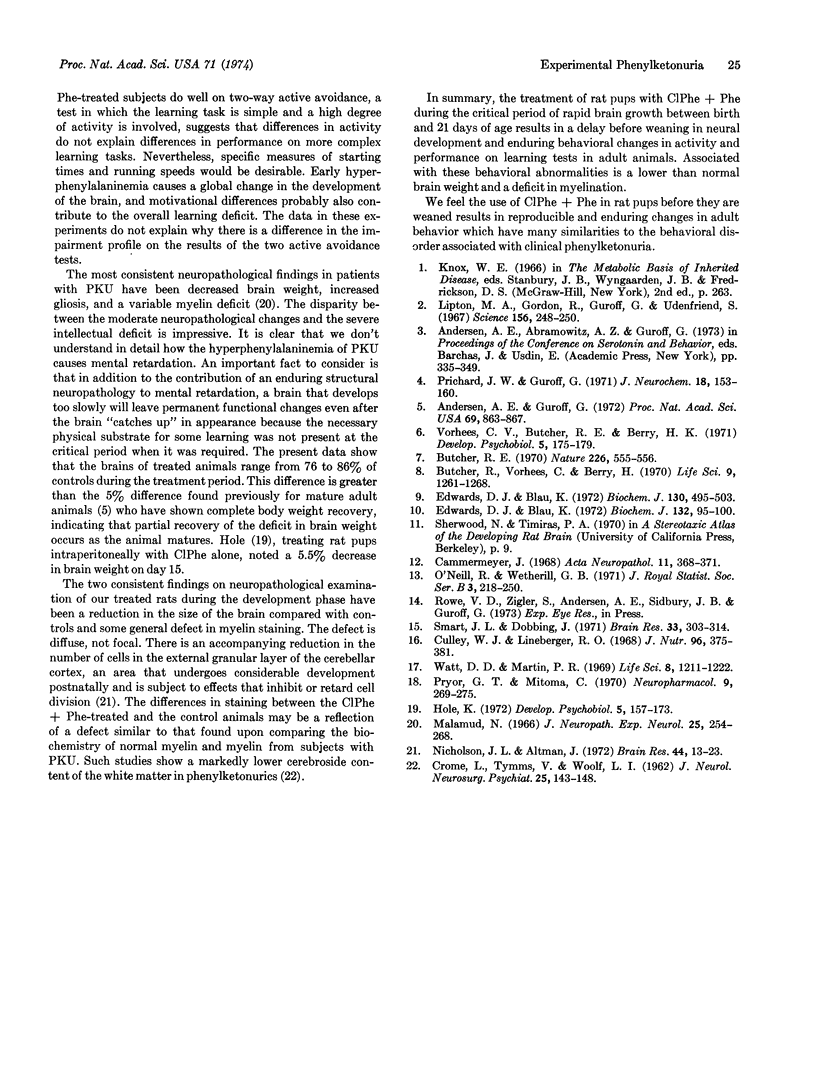
Images in this article
Selected References
These references are in PubMed. This may not be the complete list of references from this article.
- Andersen A. E., Guroff G. Enduring behavioral changes in rats with experimental phenylketonuria. Proc Natl Acad Sci U S A. 1972 Apr;69(4):863–867. doi: 10.1073/pnas.69.4.863. [DOI] [PMC free article] [PubMed] [Google Scholar]
- Butcher R. E. Learning impairment associated with maternal phenylketonuria in rats. Nature. 1970 May 9;226(5245):555–556. doi: 10.1038/226555a0. [DOI] [PubMed] [Google Scholar]
- Butcher R., Vorhees C., Berry H. A learning impairment associated with induced phenylketonuria. Life Sci I. 1970 Nov 15;9(22):1261–1268. doi: 10.1016/0024-3205(70)90266-3. [DOI] [PubMed] [Google Scholar]
- CROME L., TYMMS V., WOOLF L. I. A chemical investigation of the defects of myelination in phenylketonuria. J Neurol Neurosurg Psychiatry. 1962 May;25:143–148. doi: 10.1136/jnnp.25.2.143. [DOI] [PMC free article] [PubMed] [Google Scholar]
- Cammermeyer J. Peripheral vasoconstriction with epinephrine for selective fixation of the central nervous system by perfusion. Acta Neuropathol. 1968 Nov 1;11(4):368–371. doi: 10.1007/BF00686733. [DOI] [PubMed] [Google Scholar]
- Culley W. J., Lineberger R. O. Effect of undernutrition on the size and composition of the rat brain. J Nutr. 1968 Nov;96(3):375–381. doi: 10.1093/jn/96.3.375. [DOI] [PubMed] [Google Scholar]
- Edwards D. J., Blau K. Aromatic acids derived from phenylalanine in the tissues of rats with experimentally induced phenylketonuria-like characteristics. Biochem J. 1972 Nov;130(2):495–503. doi: 10.1042/bj1300495. [DOI] [PMC free article] [PubMed] [Google Scholar]
- Edwards D. J., Blau K. Phenethylamines in brain and liver of rats with experimentally induced phenylketonuria-like characteristics. Biochem J. 1973 Jan;132(1):95–100. doi: 10.1042/bj1320095. [DOI] [PMC free article] [PubMed] [Google Scholar]
- Hole K. Behavior and brain growth in rats treated with p-chlorophenylalanine in the first weeks of life. Dev Psychobiol. 1972;5(2):157–173. doi: 10.1002/dev.420050209. [DOI] [PubMed] [Google Scholar]
- Lipton M. A., Gordon R., Guroff G., Udenfriend S. p-Chlorophenylalanine-induced chemical manifestations of phenylketonuria in rats. Science. 1967 Apr 14;156(3772):248–250. doi: 10.1126/science.156.3772.248. [DOI] [PubMed] [Google Scholar]
- Malamud N. Neuropathology of phenylketonuria. J Neuropathol Exp Neurol. 1966 Apr;25(2):254–268. doi: 10.1097/00005072-196604000-00006. [DOI] [PubMed] [Google Scholar]
- Nicholson J. L., Altman J. The effects of early hypo- and hyperthyroidism on the development of rat cerebellar cortex. I. Cell proliferation and differentiation. Brain Res. 1972 Sep 15;44(1):13–23. doi: 10.1016/0006-8993(72)90362-9. [DOI] [PubMed] [Google Scholar]
- Prichard J. W., Guroff G. Increased cerebral excitability caused by p-chlorophenylalanine in young rats. J Neurochem. 1971 Jan;18(1):153–160. doi: 10.1111/j.1471-4159.1971.tb00177.x. [DOI] [PubMed] [Google Scholar]
- Pryor G. T., Mitoma C. Use of p-chlorophenylalanine to induce a phenylketonuric-like condition in rats. Neuropharmacology. 1970 May;9(3):269–275. doi: 10.1016/0028-3908(70)90076-6. [DOI] [PubMed] [Google Scholar]
- Smart J. L., Dobbing J. Vulnerability of developing brain. VI. Relative effects of foetal and early postnatal undernutrition on reflex ontogeny and development of behaviour in the rat. Brain Res. 1971 Oct 29;33(2):303–314. doi: 10.1016/0006-8993(71)90105-3. [DOI] [PubMed] [Google Scholar]
- Vorhees C. V., Butcher R. E., Berry H. K. Reduced activity in rats with induced phenylketonuria. Dev Psychobiol. 1972;5(2):175–179. doi: 10.1002/dev.420050210. [DOI] [PubMed] [Google Scholar]
- Watt D. D., Martin P. R. Phenylalanine antimetabolite effect on development. I. Behavioral effects of D,L-4-chlorophenylalanine in the young rat. Life Sci. 1969 Nov 1;8(21):1211–1222. doi: 10.1016/0024-3205(69)90050-2. [DOI] [PubMed] [Google Scholar]



